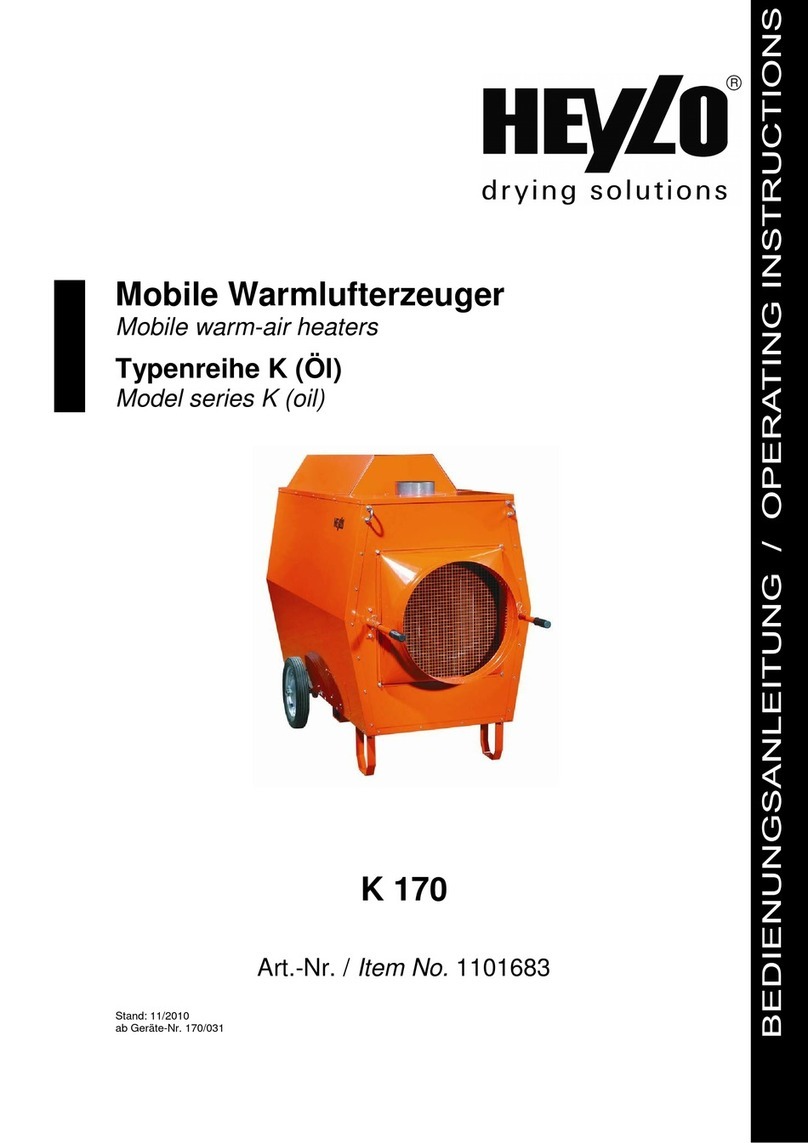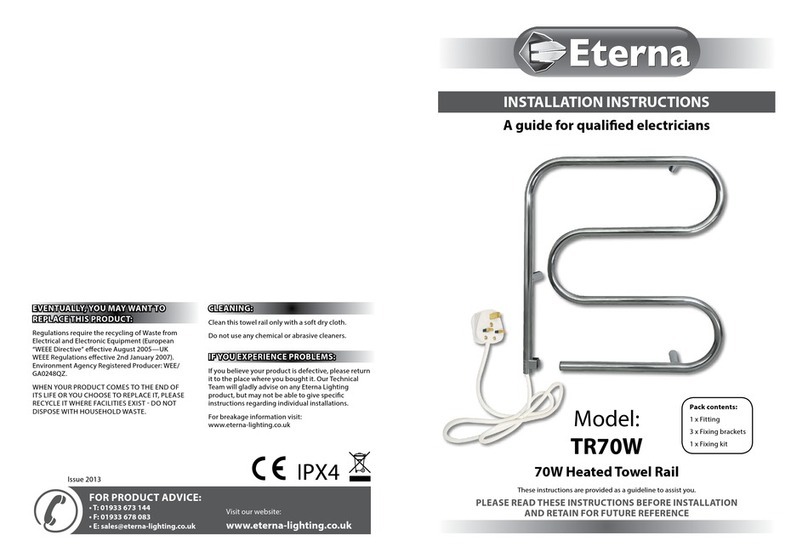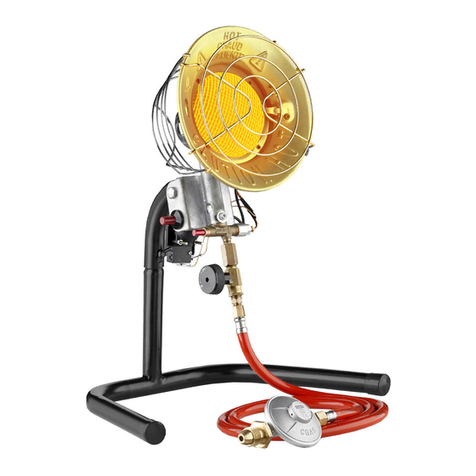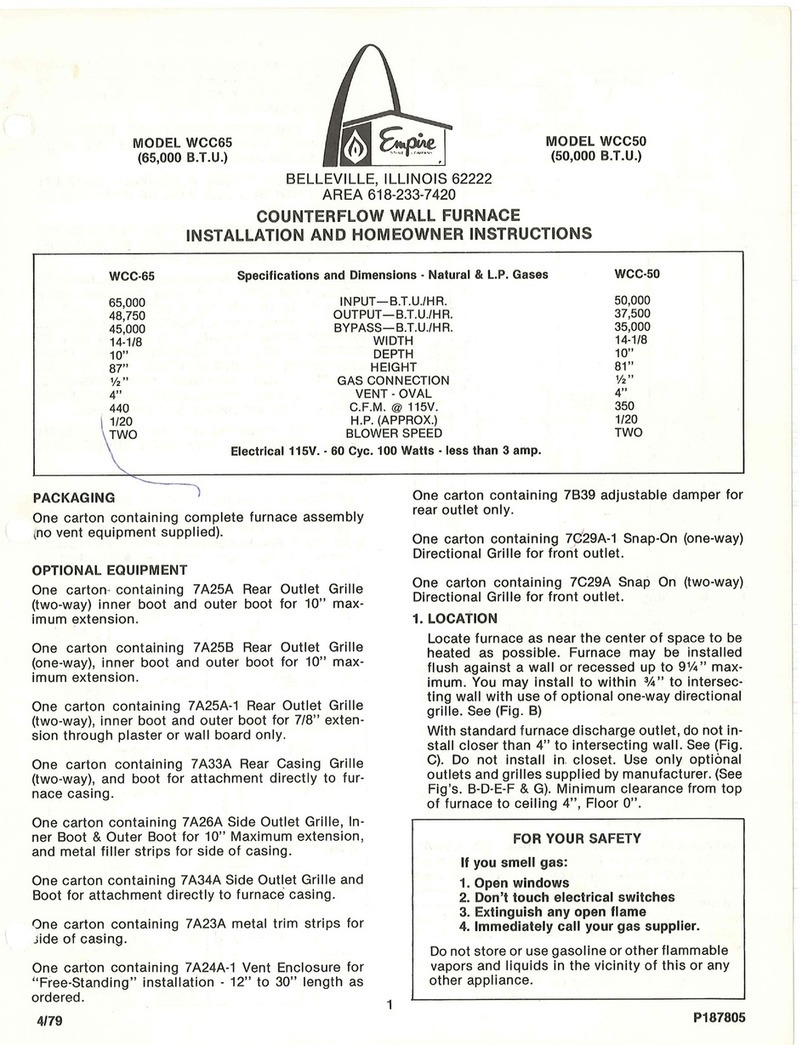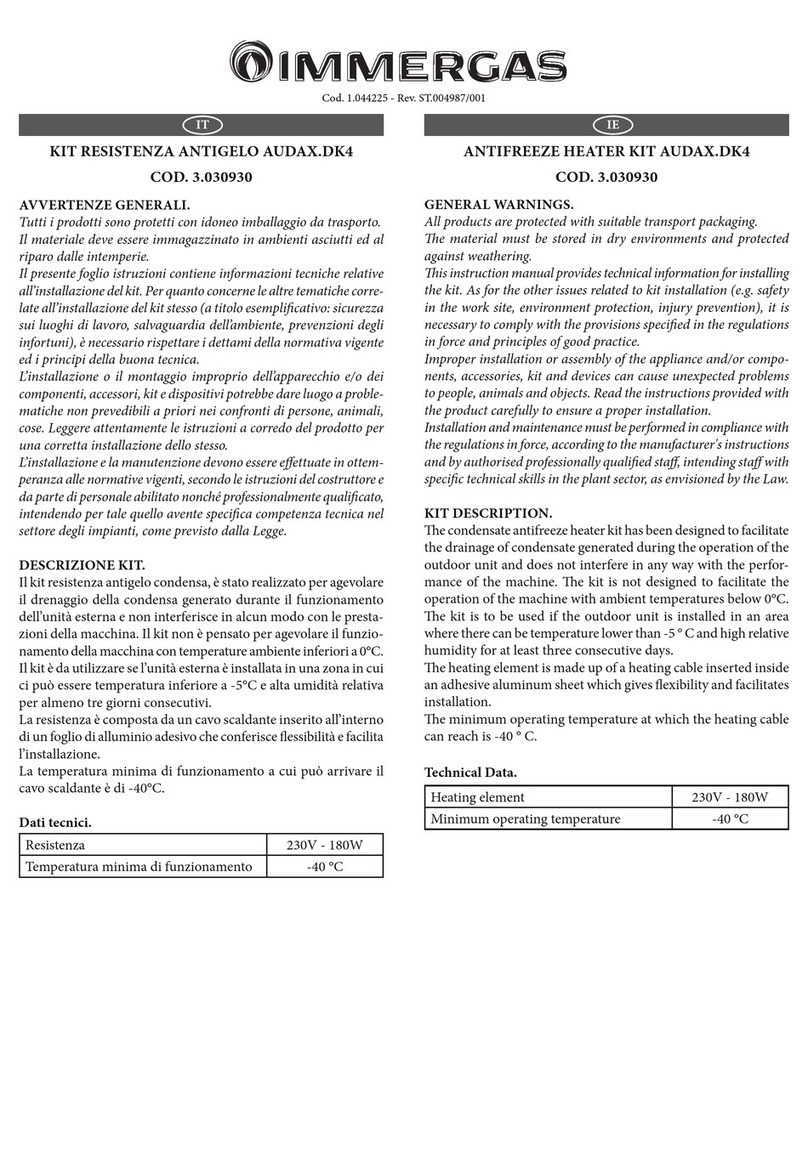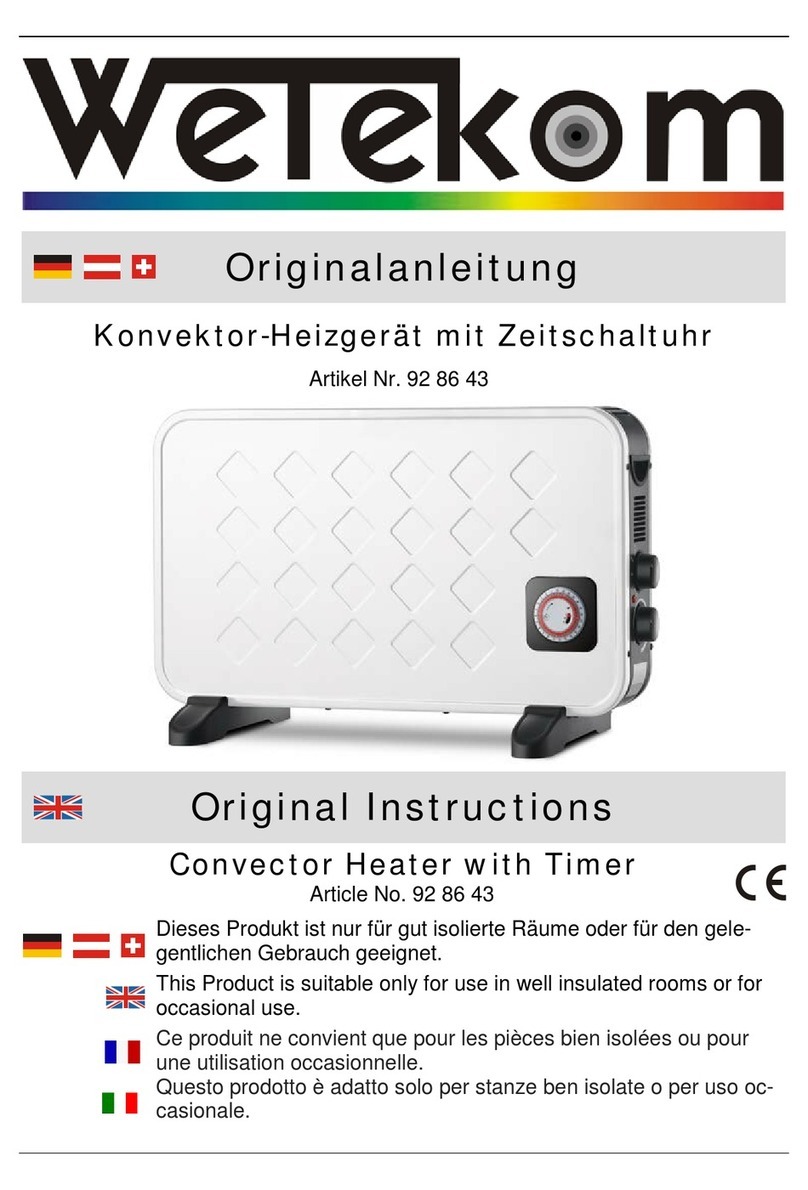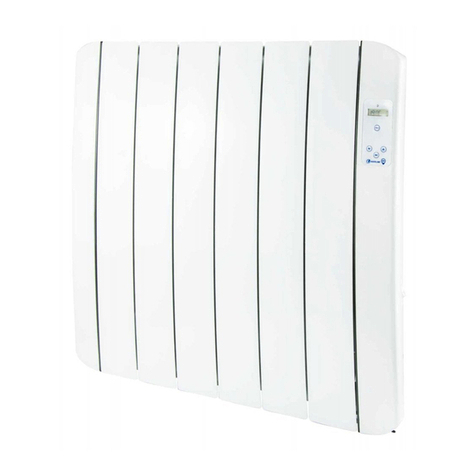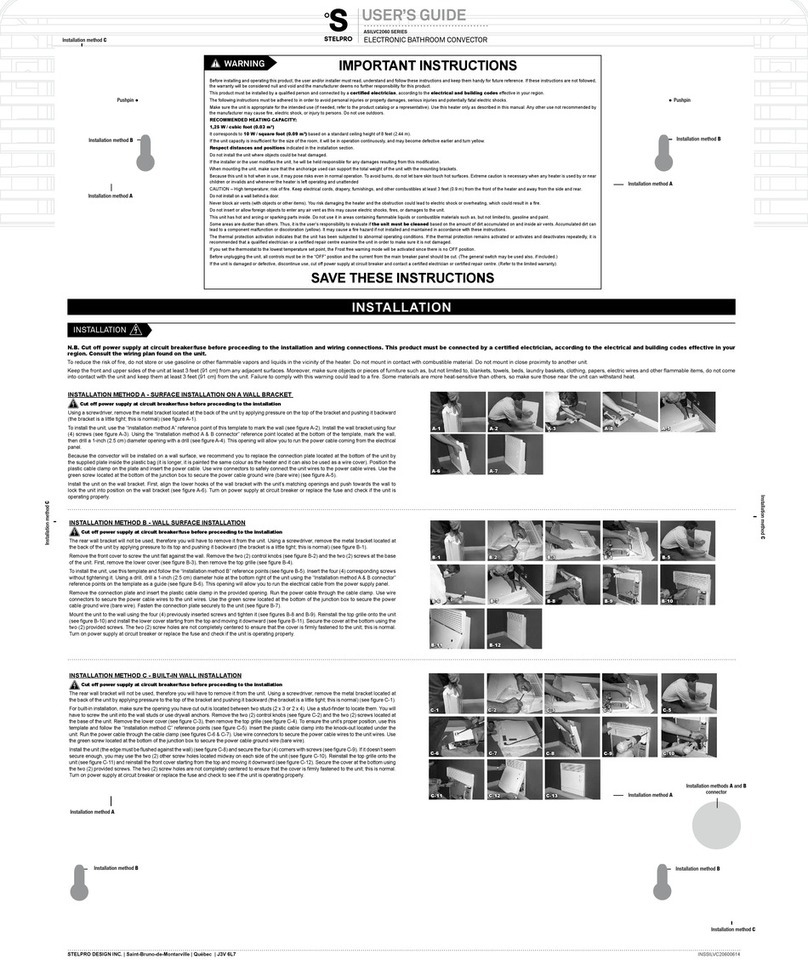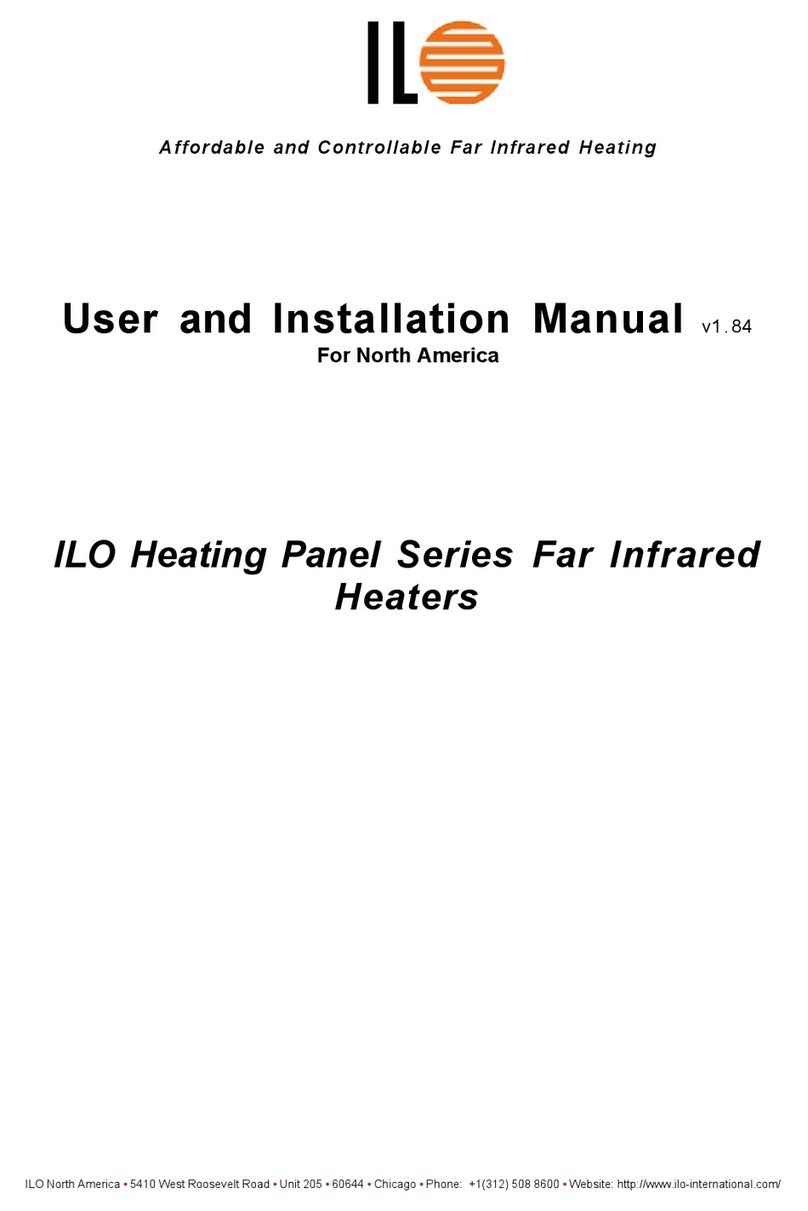
5
1-1
INSTALLERUSERMAINTENANCE TECHNICIAN
1WATER HEATER INSTALLA
TION
1.1 INSTALLATION RECOMMENDA
TIONS.
e Julius water heater has been designed for wall
installation. It must be used for the production
of domestic hot water and similar purposes.
In the case of wall installation the wall surface
must be smooth, without any protrusions or
recesses enabling access to the rear part. ey
are not designed to be installed on plinths or
oors (Fig. 1-1).
e place of installation of the appliance and
relative Immergas accessories must have suitable
features (technical and structural) such to allow
(always in safety, efficiency and comfortable
conditions):
- installation (according to the provisions of the
technical legislation and technical regulations);
- maintenance operations (including scheduled,
periodic, routine and special maintenance);
- removal (to outdoors in the place for loading
and transporting the appliances and compo-
nents) as well as their eventual replacement
with appliances and/or equivalent components.
Only professionally enabled companies are
authorised to install Immergas gas appliances.
Installation must be carried out according to
regulation standards, current legislation and in
compliance with local technical regulations and
the required technical procedures.
Attention: the manufacturer declines all liability
for damages caused by boilers removed from
other systems or for any non-conformities of
such equipment.
Before installing the appliance, ensure that it is
delivered in perfect condition; if in doubt, contact
the supplier immediately. Packing materials (sta-
ples, nails, plastic bags, polystyrene foam, etc.)
constitute a hazard and must be kept out of the
reach of children.
If the appliance is installed inside or between
cabinets, ensure sucient space for normal ser-
vicing; therefore it is advisable to leave clearance
of at least 3 cm between the water heater casing
and the vertical sides of the cabinet. Leave ad-
equate space above the water heater for possible
water and ue removal connections.
Keep all ammable objects away from the ap-
pliance (paper, rags, plastic, polystyrene, etc.).
It is recommended not to position household
appliances under the water heater because they
could undergo damage in the case of leaks from
the hydraulic ttings. If this is not the case, the
manufacturer cannot be considered liable for
any damage caused to the household appliances.
For the aforementioned reasons, we recommend
not placing furnishings, furniture, etc. under
the water heater.
In the event of malfunctions, faults or incorrect
operation, turn the appliance o and contact an
authorised company (e.g. the Authorised Tech-
nical Assistance centre, which has specically
trained sta and original spare parts). Do not
attempt to modify or repair the appliance alone.
Failure to comply with the above implies personal
responsibility and invalidates the warranty.
• Installation regulations:
- installation of these water heaters in bed-
rooms, studio flats and bathrooms, or in
premises where there are wood red heaters
(or solid fuel heaters in general) and in prem-
ises next to or connected to them, is subject to
the regulatory/legislative provisions in force
in the country.
- Installation in places with a re risk is pro-
hibited (for example: garages, closed parking
stalls), potentially dangerous places, gas ap-
pliances, ue exhaust pipes and combustion
air intake pipes.
- Installation on the vertical projection of cook-
ing hobs is forbidden.
- Installation in the following places is pro-
hibited: places/environments that constitute
common parts of oce condominiums such
as internal stairs or other elements that are
part of the escape routes (e.g. ledges, entrance
halls), unless otherwise provided by local
regulations.
- Installation is also forbidden in places/rooms
that constitute common parts of apartment
buildings such as stairs, cellars, entrance halls,
attics, los, etc., unless otherwise provided by
local regulations.
Type B open chamber water heaters must not
be installed in places where commercial, artisan
or industrial activities take place, which use
products that may develop volatile vapours or
substances (e.g. acid vapours, glues, paints, sol-
vents, combustibles, etc.), as well as dusts (e.g.
dust deriving from the working of wood, coal
nes, cement, etc.). ese may be damaging for
the components of the appliance and jeopardise
functioning.
ey must also be installed in an environment
in which the temperature cannot fall below 0°C.
ey must not be exposed to atmospheric agents.
Attention: wall mounting of the water heater
must guarantee stable and ecient support for
the generator
e plugs (standard supply) are to be used only in
conjunction with the mounting brackets or xing
template to x the water heater to the wall; they
only ensure adequate support if inserted correctly
(according to technical standards) in walls made
of solid or semi-hollow brick or block. In the
case of walls made from hollow brick or block,
partitions with limited static properties, or in any
case walls other than those indicated, a static test
must be carried out to ensure adequate support.
N.B.: the hex head screws supplied in the blister
pack are to be used exclusively to x the relative
mounting bracket to the wall.
ese appliances are used to heat water to below
boiling temperature in atmospheric pressure.
ey must be connected to a DHW distribution
network suited to their performance and power.
YES NO








